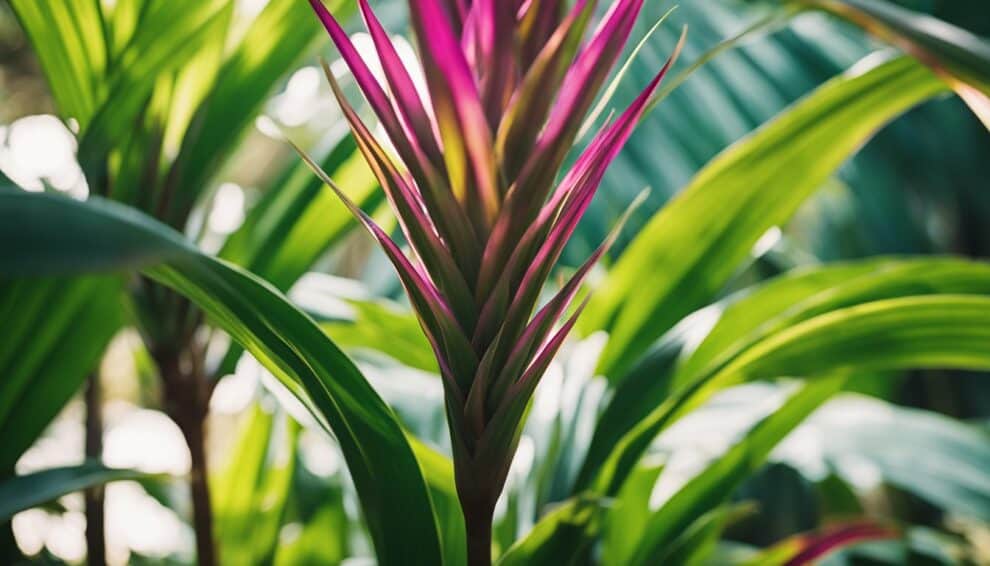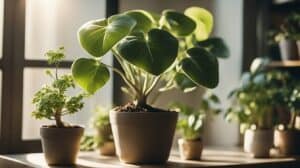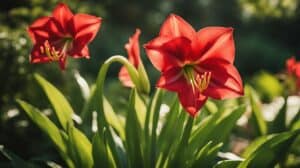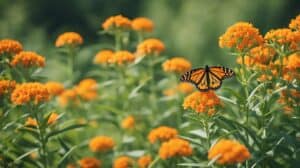Cordyline fruticosa, also known as the Hawaiian Ti plant, is a popular tropical plant that is commonly grown for its ornamental beauty.
This plant is native to Southeast Asia and the Pacific Islands, but it is now widely cultivated in many parts of the world.
The Cordyline fruticosa is a versatile plant that can be grown both indoors and outdoors, making it a great choice for novice gardeners who are looking to add some color and life to their homes or gardens.
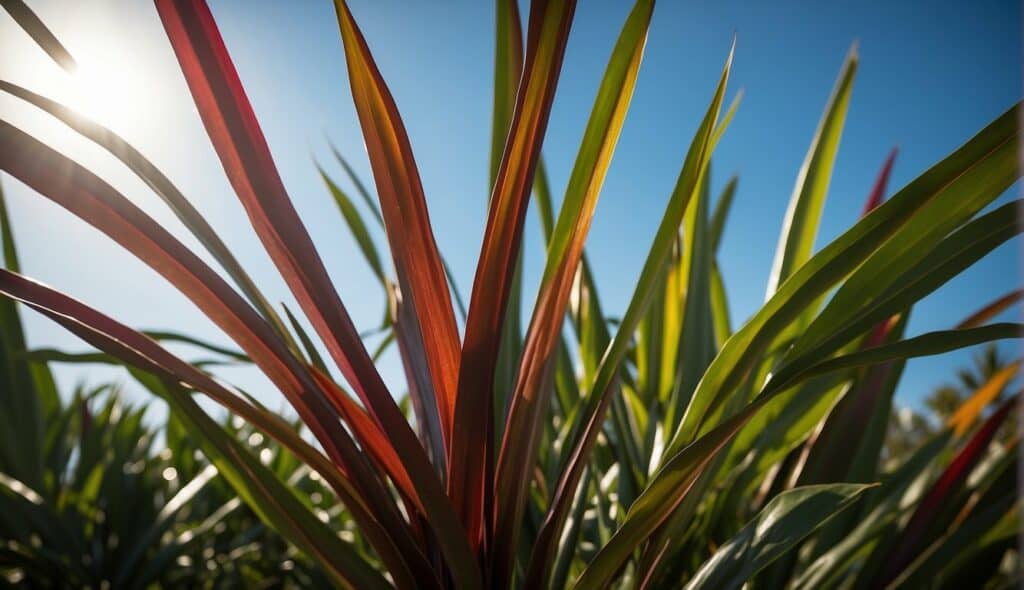
One of the most striking features of the Cordyline fruticosa is its vibrant foliage.
The plant has long, narrow leaves that come in a variety of colors, including green, red, pink, yellow, and purple.
The leaves are often variegated, with different shades of color blending together to create a stunning visual effect.
The plant also produces small, fragrant flowers that are usually white or pink in color.
Despite its exotic appearance, the Cordyline fruticosa is a relatively easy plant to care for.
It prefers well-draining soil and moderate watering, and it can tolerate a wide range of temperatures and humidity levels.
With a little bit of attention and care, this plant can thrive in a variety of growing conditions, making it an ideal choice for novice gardeners who are looking to experiment with different types of plants.
Getting to Know Cordyline Fruticosa
Origin and Species Overview
Cordyline Fruticosa, also known as the Ti plant, is a tropical evergreen plant that is native to Southeast Asia and the Pacific Islands.
It belongs to the Asparagaceae family and is closely related to the Dracaena genus.
This plant is known for its striking foliage, which comes in a variety of colors, including green, pink, red, yellow, and purple.
There are over 20 different species of Cordyline, but Cordyline Fruticosa is the most commonly cultivated species.
It is a slow-growing plant that can reach up to 10 feet in height and 5 feet in width.
The leaves are long and narrow, and they grow in a spiral pattern around the stem.
Common Names and Varieties
Cordyline Fruticosa has many common names, including Ti plant, Good Luck plant, and Hawaiian Ti plant.
In Hawaii, it is considered a sacred plant and is often used in traditional ceremonies.
There are many different varieties of Cordyline Fruticosa, each with its own unique characteristics. Some popular varieties include:
- ‘Red Sister’: This variety has red leaves with pink edges.
- ‘Kiwi’: This variety has green leaves with pink and cream stripes.
- ‘Tricolor’: This variety has green, pink, and cream-colored leaves.
Overall, Cordyline Fruticosa is a beautiful and easy-to-care-for plant that can add a tropical touch to any home or garden.
Cultivation Essentials
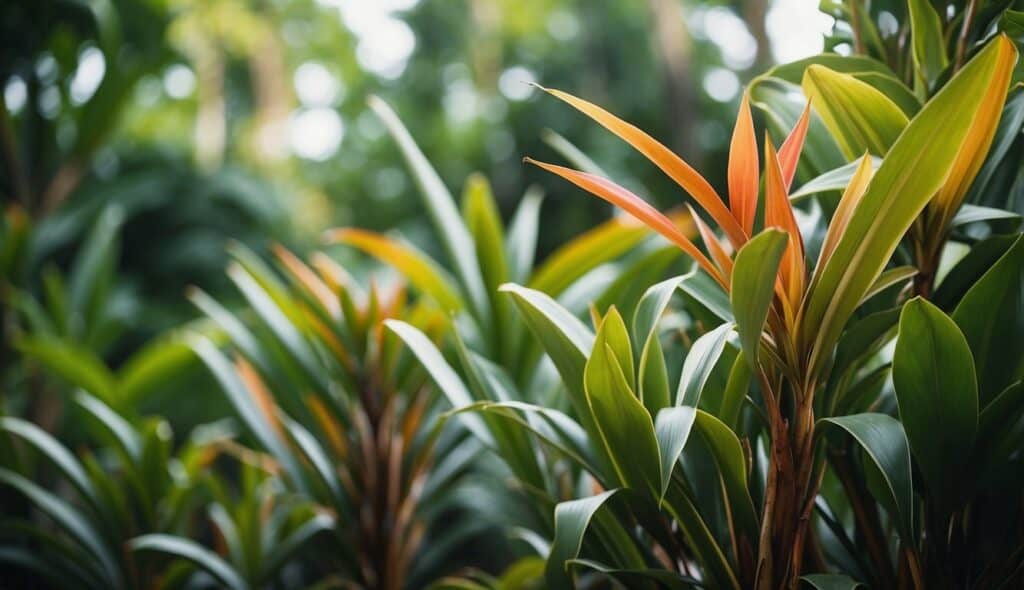
Ideal Growing Conditions
Cordyline Fruticosa is a tropical plant that thrives in warm and humid conditions. It prefers bright, indirect sunlight, but can tolerate some shade.
The ideal temperature range for Cordyline Fruticosa is between 65-85°F (18-29°C).
It is important to keep the plant away from cold drafts and temperatures below 55°F (13°C).
Planting and Repotting Guidelines
When planting Cordyline Fruticosa, it is important to choose a well-draining potting mix. The plant prefers slightly acidic soil with a pH range of 5.5-6.5.
The pot should have drainage holes to prevent water from accumulating in the soil.
Repotting should be done every 2-3 years, or when the plant has outgrown its current pot. The best time to repot is in the spring or early summer.
When repotting, choose a pot that is one size larger than the current pot.
Gently remove the plant from its current pot and loosen the roots before placing it in the new pot with fresh potting soil.
Watering and Feeding Requirements
Cordyline Fruticosa requires regular watering to keep the soil moist, but not waterlogged. Water the plant when the top inch of soil feels dry to the touch.
It is important to avoid overwatering, as this can lead to root rot.
Fertilize Cordyline Fruticosa every 2-3 months during the growing season with a balanced fertilizer.
Do not fertilize during the winter months when the plant is dormant.
It is important to follow the manufacturer’s instructions for the specific fertilizer being used.
By following these cultivation essentials, novice gardeners can successfully grow and maintain the radiant Cordyline Fruticosa plant.
Maintenance and Care

Cordyline fruticosa is a low-maintenance plant, but it still requires some care to thrive.
Here are a few tips on how to maintain and care for your Cordyline fruticosa.
Pruning and Shaping
Pruning is essential to keep Cordyline fruticosa looking healthy and attractive. It involves removing dead, damaged, or diseased leaves and stems.
Pruning also helps to shape the plant and encourage new growth.
To prune Cordyline fruticosa, use a sharp, clean pair of pruning shears.
Cut the stem just above a leaf node, which is the point where a leaf attaches to the stem.
Avoid cutting too close to the stem, as this can damage the plant.
Shaping Cordyline fruticosa is also important to keep it looking neat and tidy.
You can do this by removing any stems that are growing in the wrong direction or are too long.
You can also cut back the top of the plant to encourage bushy growth.
Pest and Disease Management
Cordyline fruticosa is generally resistant to pests and diseases. However, it can still be affected by a few common problems.
One of the most common pests that affect Cordyline fruticosa is mealybugs.
These small, white insects feed on the sap of the plant and can cause stunted growth and yellowing leaves.
To control mealybugs, spray the plant with a mixture of water and dish soap.
Another common problem is leaf spot, which is caused by a fungus. This disease causes brown spots on the leaves and can lead to defoliation.
To prevent leaf spot, avoid overwatering and make sure the plant has good air circulation.
Overall, Cordyline fruticosa is a beautiful and easy-to-care-for plant.
With a little bit of maintenance and care, you can enjoy its radiance for years to come.
Designing with Cordyline
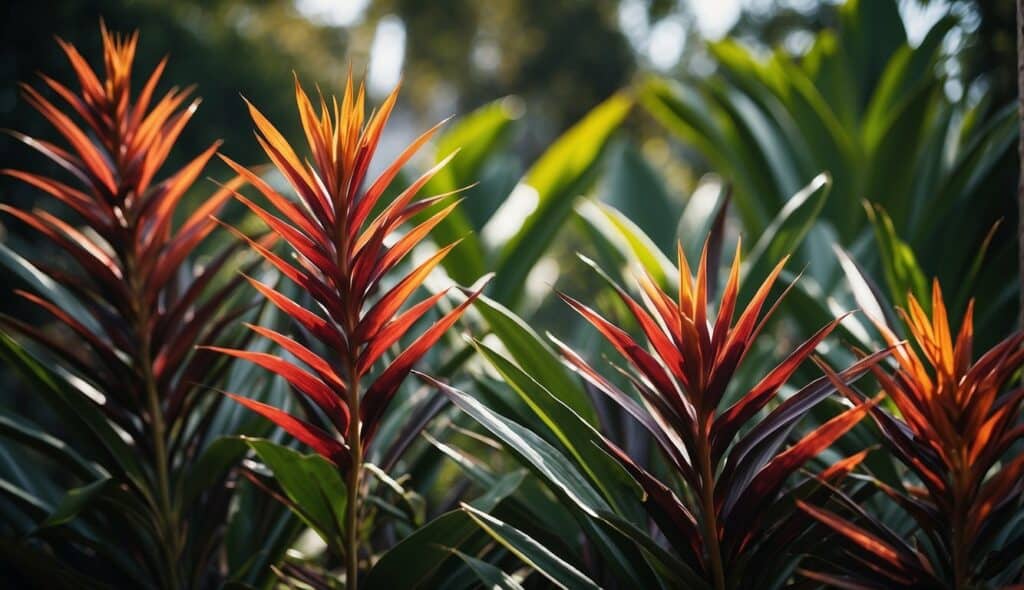
Cordyline plants are versatile and can be used in various design settings to add a touch of radiance.
Here are some tips on how to design with Cordyline plants.
Landscape Uses
Cordyline plants are ideal for landscaping projects. They can be used as focal points, borders, or mass plantings.
When using Cordyline plants in landscaping, it is important to consider their growth habits.
Some Cordyline plants grow tall and slender, while others grow short and bushy.
The height and shape of the plant should be considered when determining where to place it in the landscape.
Cordyline plants can also be used in container gardens. They make great additions to patios, balconies, and other outdoor spaces.
When designing with Cordyline plants in containers, it is important to choose a pot that is large enough to accommodate the plant’s root system.
Cordyline plants prefer well-draining soil, so it is important to use a potting mix that is designed for container gardening.
Indoor Decorative Tips
Cordyline plants can also be used as decorative elements in indoor spaces. They can be used as focal points in living rooms, dining rooms, and other areas.
When designing with Cordyline plants indoors, it is important to consider the lighting conditions of the room. Cordyline plants prefer bright, indirect light.
They should be placed near a window that receives bright, indirect light.
Cordyline plants can also be used in office spaces. They make great additions to reception areas, conference rooms, and other areas.
When designing with Cordyline plants in office spaces, it is important to consider the size of the plant.
Cordyline plants that are placed in small spaces can be trimmed to keep them from becoming too large.
In conclusion, Cordyline plants are versatile and can be used in various design settings.
Whether you are designing a landscape or an indoor space, Cordyline plants can add a touch of radiance to any design.
Frequently Asked Questions

What are the common names for Cordyline fruticosa?
Cordyline fruticosa is commonly known as Ti plant, Hawaiian Ti plant, Good luck plant, and Ti leaf.
How do you care for a Cordyline fruticosa plant?
Cordyline fruticosa requires well-draining soil and moderate watering. It prefers a warm and humid environment and can be grown indoors or outdoors.
It needs to be fertilized every two weeks during the growing season. Pruning is necessary to maintain its shape and size.
What are the medicinal uses of Cordyline fruticosa?
Cordyline fruticosa has been used in traditional medicine to treat various ailments such as headaches, fever, and sore throat.
Its leaves are also used to make a poultice for wounds and bruises.
Can Cordyline fruticosa thrive in full sunlight?
Cordyline fruticosa can tolerate full sunlight but prefers partial shade. It can also adapt to low light conditions but may not thrive as well.
Is Cordyline fruticosa toxic to humans?
Cordyline fruticosa is not toxic to humans but can be toxic to pets if ingested.
How is Cordyline fruticosa classified in plant taxonomy?
Cordyline fruticosa belongs to the Asparagaceae family and is classified as a monocotyledonous flowering plant.
It is native to Southeast Asia and the Pacific Islands.






